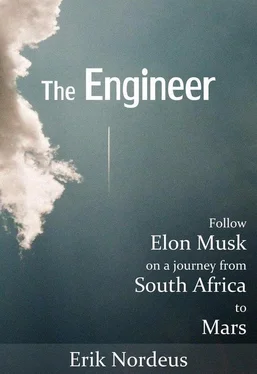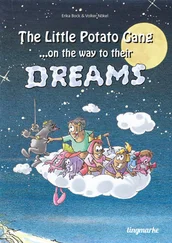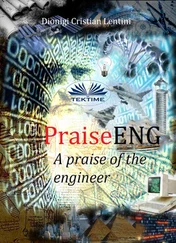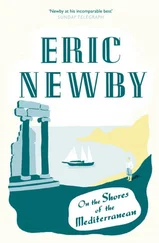With money comes the luxury of having a decent office. No water leaks. No futon sofas. No drilled holes in the floor just to get an Internet connection. And, above all, no low-cost fast-food restaurants as X.com’s office was above a bakery close to the Stanford University in California.
X.com developed the main product where their customers could see all their bank accounts, insurances, and everything else they could need. This was an easy task, but it still took a long time to develop the product. “Money is just an entry in a database,” Elon said. 354They also got some attention in the industry with a no-fee S&P 500 index fund – the first of its kind. The purpose of the fund was to attract new users who could pay for their other products. 189
With the main product ready, they developed a smaller feature as a complement to the main product. It took a day to develop the smaller feature, and it was a way to e-mail money from one e-mail address to another. It didn’t have to be an e-mail address, you could use any unique identifier. It was also possible to transfer stocks, mutual funds, and similar assets. If the recipient didn’t have an X.com account, the system automatically sent an e-mail where the recipient was asked to register for an account.
When X.com demonstrated these two features, they realized the smaller feature was more popular. “Whenever we’d show the system off, we’d show the hard part, the conglomeration of financial services, which is difficult to put together, nobody was interested,” Elon said. “Then we showed people e-mail payments, which was easy to put together, and everyone was interested. So, it’s important to take feedback from your environment. You want to be as closed-loop as possible.” 63
Because of this new insight, X.com decided to focus on e-mail payments. To succeed with e-mail payments, and because of Metcalfe’s Law, growth of users would become the most important task. Robert Metcalfe came up with the law and it says that the value of a network equals the square of its users. A network with twice as many users as a competitor is four times as valuable. So to crush the competitors, X.com needed to achieve a so-called network effect which says that a large established network is valuable to enter and costly to leave. If many people used X.com, it would be difficult for competitors to attract new customers because everyone is already using X.com. They wanted to lock in their members to prevent competitors from growing. This is why it’s difficult for Google+ to attract users from Facebook. 189
To achieve this network effect, Elon came up with a clever way to attract new customers. X.com offered $20 to anyone who opened an account, and members who referred new customers were awarded $10 for each referral. “X.com is really a perfect case example of viral marketing where one customer act as a salesperson for you for bringing in other customers,” Elon said. “So you had this exponential growth. It was like bacteria in a petri dish. We didn’t have a sales force. We didn’t spend any money on advertising.” 364
Within two months, X.com had 100 000 customers. This number can be compared with the then largest web-based bank, Etrade Telebank, that had 130 000 customers. But X.com wasn’t the only company in the payments industry. X.com’s office had shared common space with a company called Confinity before they needed a larger office.
* * *
The Ukrainian born Max Levchin had early learned how to program on whatever he could find. When his family moved to US in 1991, he went through dumpsters to find things to rebuild while he taught himself English by watching television. A degree in Computer Science from the University of Illinois taught him how to create and break codes. 261“These crooks are intelligent, but they leave clues. I’m the Sherlock Holmes of the Internet underground,” Levchin said. 185
In the summer of 1998, at the same time as when Elon fought for the future of Zip2, Levchin didn’t really know what to do with his life. What he knew was that he wanted to start a company within his passion: cryptography. To come up with new ideas, he took a random lecture at the Stanford University. The subject was “The link between market globalization and political freedom,” and the guest lecturer Peter Thiel gave the lesson. 393
While Thiel was born in 1967 in Germany, his family moved to California when he was young. Stanford was the school of his choice before he began trading derivatives at the Credit Suisse Group. In 1996, he founded the hedge-fund Thiel Capital Management, and he’s also famous for being the first outside investor in Facebook. Thiel has also donated $3.5 million to the Methuselah Foundation – a life-extension-research organization that believes humans will one day live to be 1000 years old. One of the founders argued that the first human to live a 1000 years is already born. 260
Only six people showed up to the lecture at Stanford. After the lecture, Levchin walked up to Thiel. They began to talk. Something clicked so they decided to meet again at the restaurant Hobee’s to continue their discussion. Levchin had some ideas about what kinds of companies he wanted to found, Thiel took the bait and decided to invest in one of the ideas. “Take this idea, because this one is better, and you go start a company around it, and then I can have my hedge fund invest a little bit of money in it,” Thiel said. 186
The new company Fieldlink was born. They would later change the name of the company to Confinity – a name that originates from the words confidence and infinity. 393But Levchin couldn’t find a CEO to run the company. He didn’t want to be the CEO himself because he wanted to develop software and recruit programmers. Thiel suggested he could be the CEO and Levchin could be the CTO. 186,260
The original idea behind Confinity was to develop security software for the Palm Pilot, which was a popular brand of smaller hand-held computers. Imagine an iPhone with a black-and-white screen you can’t make a call from. To interact with the screen, the user needed the same type of stylus Steve Jobs made fun of when he presented the first iPhone. “Who wants a stylus?” Jobs asked. “You have to get them, put them away, you lose them. Yech! Nobody wants a stylus. So let’s not use a stylus.” But it turned out that Confinity’s idea couldn’t become profitable. “It’s really cool, it’s mathematically complex, it’s very secure, but no one really needed it,” Levchin said. So they decided to change business idea. 186
Changing the business idea is common when building a new company. It’s known as “to pivot.” You try a new idea, you kill the idea quickly if it doesn’t work, and move on to your next idea. The first Sony product was a rice cooker – not a television. Nokia used to make boots and other rubber products – not mobile phones. Toyota used to manufacture automatic looms – not cars. “It’s Darwinian there [in Silicon Valley] – you innovate or die.” Elon said. 50
Years before Bitcoin became a popular currency, the Confinity team discussed an idea to create a web-based currency that undermined government tax structures. 260But they decided to develop a software where it would be possible to store passwords and other secrets in the Palm Pilot. This idea got some attention, but they decided to pivot once again. 186
Now they wanted to create a software called PayPal where you could store money inside of a device and transfer the money to other devices. Do you want to buy a hamburger? Bring up the Palm Pilot and beam the money to the seller of the hamburger who also needed to have a Palm Pilot. The whole process took five seconds. You could also install PayPal on your phone and pager. “All these devices will become one day just like your wallet,” Thiel said. “Every one of your friends will become like a virtual, miniature ATM.” 256
Читать дальше











